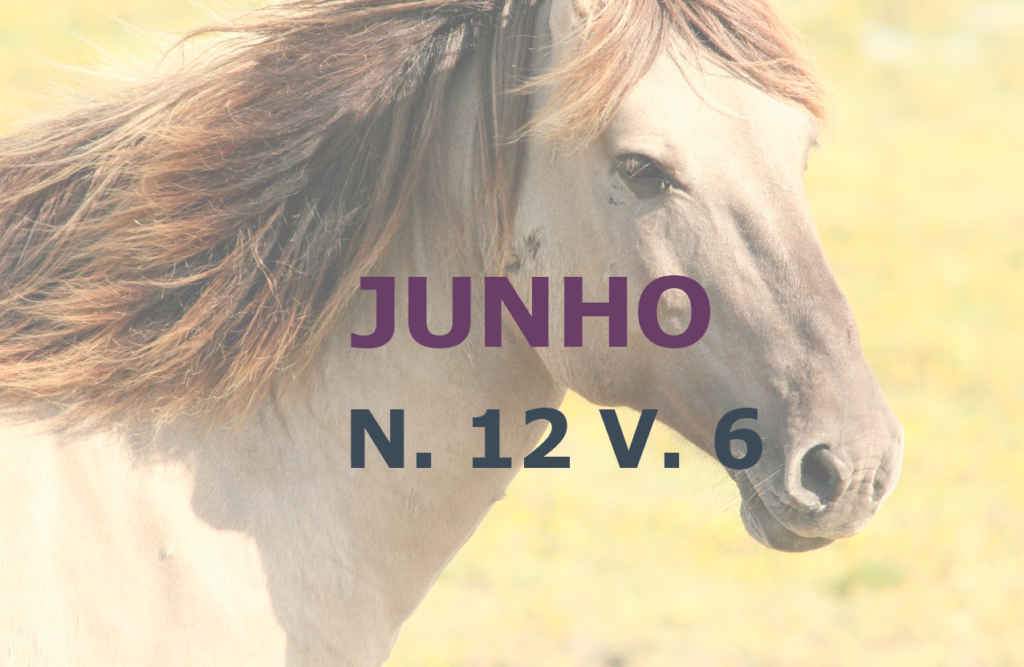Effects of yohimbina, atipamezole and naloxone on the anesthetic reversal in Howley monkeys (Alaoutta guariba clamitans)
DOI:
https://doi.org/10.22256/pubvet.v12n6a114.1-6Keywords:
Keywords: Atipamezole, dexmedetomidine, yohimbine, primateAbstract
The present study addressed the effects caused by chemical restraint with methadone (0,1mg/kg), dexmedetomidine (5µg/kg) and ketamine (8 mg/kg) in Howley monkeys (Alouattaguaribaclamitans) and the comparison of the quality and the time of the anesthetic reversal with isolated or associated narcotic α2-adrenergic antagonists. Five adult and healthy Howley monkeys were submitted to food and water restraining intake of 12 hours. The anesthetic protocol was administered via intramuscular in the semimembranosus and semitendinosus muscles. Five minutes after sedation, the animal was put on a table with thermal mattress where the following parameters were measured: cardiac and respiratory frequencies, rectal temperature, systolic blood/arterial pressure and palpebral reflexes. These parameters were measured every 10 minutes. After 40 minutes of anesthesia a solution of NaCl 0.9% were administered to the control treatment, 25µg/kg of atipamezole for the ATI treatment, 0,5 mg/kg of yohimbine to the IOI treatment, atipamezole (25µg/kg) with naloxone (0,2 mg/kg) to the ATINALOX treatment and the IOINALOX treatment was composed of yohimbine (0,5 mg/kg) associated with naloxone (0,2 mg/kg), administered via intravenous in the primates’ ulnar vein. After the reverser administration the animal was placed on a cage in supine and the period of full recovery was understood from the antagonist administration until the patient’s full recovery. The recovery was evaluated using scores that varied from zero (0) to three (3). The association of methadone, dexmedetomidine and ketamine was effective to the chemical restraint of these animals allowing the performance of clinical procedures during up to 40 minutes. Some animals showed drooling after the intravenous administration of atipamezole and yohimbine. The IOINALOX treatment was the most effective regarding to time but the ATINALOX treatment gained the best recovery.
Downloads
Published
Issue
Section
License
Copyright (c) 2018 Sharlenne Leite da Silva Monteiro, Ramiro Neves Dias Neto, Carlos Roberto Teixeira, Gustavo Calasans Marques, Maíra Sales Castilho

This work is licensed under a Creative Commons Attribution 4.0 International License.
Você tem o direito de:
Compartilhar — copiar e redistribuir o material em qualquer suporte ou formato
Adaptar — remixar, transformar, e criar a partir do material para qualquer fim, mesmo que comercial.
O licenciante não pode revogar estes direitos desde que você respeite os termos da licença. De acordo com os termos seguintes:
Atribuição
— Você deve dar o crédito apropriado, prover um link para a licença e indicar se mudanças foram feitas. Você deve fazê-lo em qualquer circunstância razoável, mas de nenhuma maneira que sugira que o licenciante apoia você ou o seu uso. Sem restrições adicionais
— Você não pode aplicar termos jurídicos ou medidas de caráter tecnológico que restrinjam legalmente outros de fazerem algo que a licença permita.





